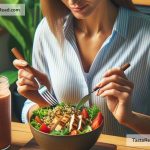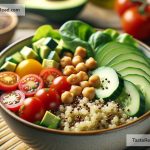Gluten-Free Meal Planning for Fitness Enthusiasts: Simplified
Embarking on a fitness journey can be exciting and a bit daunting, especially when you’re aiming to incorporate a gluten-free diet into your regimen. Whether you’re choosing to go gluten-free for health reasons, like celiac disease or gluten sensitivity, or simply looking to explore new dietary options, aligning this lifestyle with your fitness goals can feel like a puzzle. But worry not! We’ve got you covered with simple and effective tips to make gluten-free meal planning a breeze for fitness enthusiasts.
Understanding Gluten-Free
First things, first: What is gluten? Simply put, gluten is a group of proteins found in grains such as wheat, barley, and rye. For some, it can cause health issues, thus the shift to a gluten-free lifestyle. Now, opting for a gluten-free diet doesn’t mean you have to sacrifice nutrition or taste—quite the contrary. It’s an opportunity to discover a wide array of foods that can fuel your fitness journey effectively.
The Foundation: Building Your Gluten-Free Pantry
Starting with the basics, your pantry should be stocked with naturally gluten-free grains like quinoa, brown rice, and buckwheat. These grains are not only versatile but also packed with essential nutrients and energy that support your workout routines. Moreover, lean proteins (think chicken, fish, tofu, and legumes), healthy fats (such as avocados, nuts, and seeds), and a colorful assortment of fruits and vegetables should form the cornerstone of your diet.
Hydration and Snacks
Staying hydrated is crucial, especially when you’re active, so keep water and electrolyte-rich drinks at hand. When it comes to snacking, keeping gluten-free options ready can help you steer clear of unwanted hunger pangs and maintain energy levels. Some great options include fruit with nut butter, yogurt with gluten-free granola, and homemade protein bars.
Prepping is Key
Meal prepping is your best friend. It not only saves time but also ensures you’re eating according to your dietary needs and fitness goals. Dedicate a few hours each week to cook and pack your meals. This could include roasting a big batch of vegetables, cooking up some quinoa, or preparing lean proteins. By doing so, you’ll have control over what you’re eating, portion sizes, and, importantly, you’ll avoid the temptation of reaching for something that might not be gluten-free.
Creativity in the Kitchen
Eating gluten-free doesn’t mean boring meals. Experiment with different cuisines that are naturally gluten-free or have a variety of gluten-free options. For instance, Mexican cuisine offers delicious choices like corn tortillas and rice dishes, while many Asian dishes use rice noodles and tamari (a gluten-free alternative to soy sauce) that can be easily incorporated into your diet.
Additionally, don’t shy away from trying gluten-free recipes that substitute traditional ingredients with gluten-free alternatives. For example, using almond flour instead of regular flour for your baking needs, or chickpea pasta as a nutrient-dense option for pasta dishes.
Eating Out and Social Events
Navigating social events and dining out can be tricky when you’re following a specific diet. However, it’s entirely manageable with a bit of planning. When eating out, look up the menu ahead of time and don’t hesitate to ask questions about the ingredients and preparation methods. Most restaurants are accommodating and can offer gluten-free options. At social events, consider bringing a dish that you know is safe for you to eat. This not only ensures you have something to enjoy but also introduces others to the delicious possibilities of gluten-free cuisine.
Listening to Your Body
Lastly, every fitness enthusiast understands the importance of listening to their body, and the same goes for nutrition. Pay attention to how your body responds to different foods and adjust your diet accordingly. Remember, what works for someone else might not necessarily work for you.
In conclusion, aligning a gluten-free diet with your fitness goals is not only possible but can also be a rewarding and delicious adventure. With some planning, creativity, and a willingness to explore new foods, you can enjoy nutritious and tasty meals that fuel your body and support your fitness journey. Remember, going gluten-free is a lifestyle change that can lead to a healthier and more energetic you, so embrace the journey with positivity and enthusiasm.


